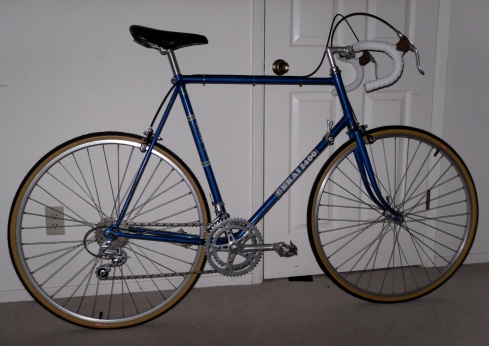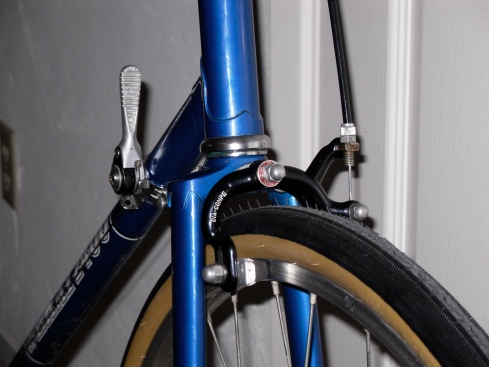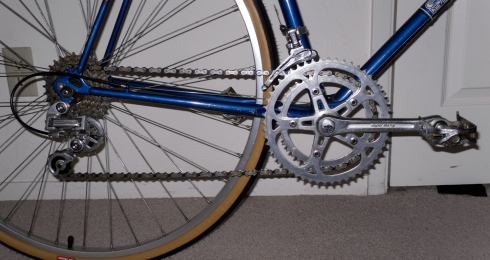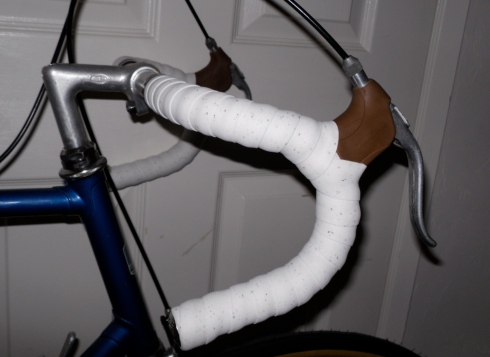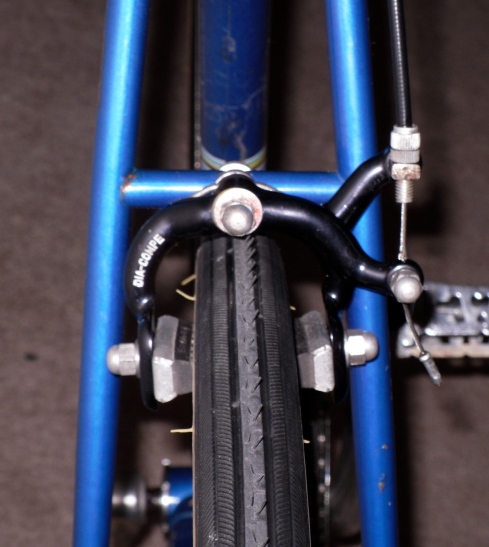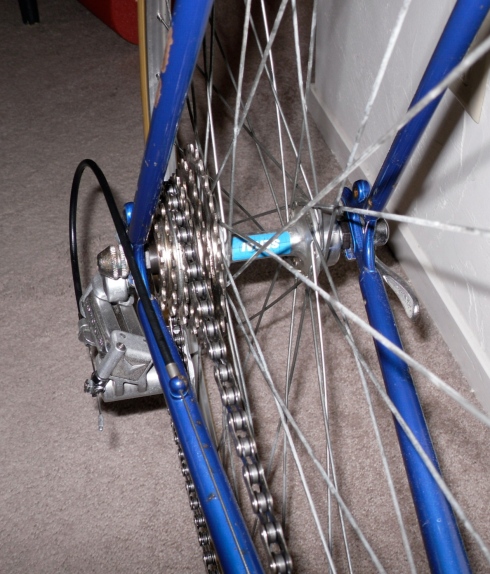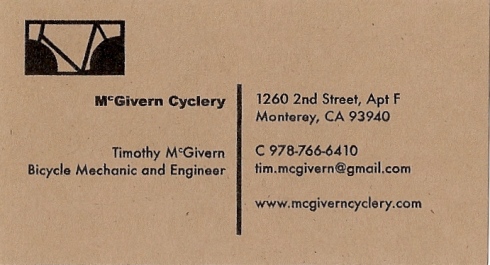Here is another one for the Hardware Store Tools category. One of the most important pieces on a bicycles drive train is the rear derailer hanger. It seems like such a small, insignificant part of a bicycle, but it holds the power to really screw up your shifting performance. It also happens to be very susceptible to damage. A minor crash, or even just your bike tipping over can bend this little tab enough to ruin your ride. If the bend is fairly minor, it can be fixed. If it’s a major bend, you may need someone to replace the hanger, or if its integrated into the rear dropout, you may need someone to replace the dropout. Lets assume it’s a minor bend. You can either buy a tool made specifically for this trouble, or make your own. The following tool can be used to check your alignment, and make minor corrections. Major corrections should not be made with this tool. If major corrections need to be made, and its out of your judgment, see a professional.
Cost: $13.00 + 2 hours of time (this is assuming you have the tools, an extra axle, some extra nuts, and a small steel ruler.)
-

-
Shown in use. Ignore the fact I’m modeling it on a fixed gear bike.
-

-
Pic 2
-

-
Pic 3
-

-
Pic 4: Performing the measurement
-

-
Pic 5
-

-
Pic 6
Making this tool requires you already to have the following tools:
-bench vise
-hacksaw, bandsaw, or something else able to make a straight cut through a piece of 1″ square mild steel stock.
-scratch awl, prick punch, and center punch
-steel ruler, or vernier calipers
-Counter sink bit (optional)
-a drill with a 23/64 drill bit for metal
-hand file, or small rotary grinder
And the following supplies:
-370mm long 1″ mild steel square section. Cut to length and file smooth
-rear axle with 4 nuts. Most axles are threaded M10x1.0 just like your derailer hanger. A long bolt of this thread will also work, but good luck finding that
-22mm spacer (or combo of two) for the inside of the steel square section
-15mm spacer for the outside of the steel section
-Small steel ruler
Design:
-In order to properly bend back the hanger, the tool must be threaded, and must have a nut on either side of the hanger. This way, the faces of hanger, and the inner threads remain properly aligned with each other. You can see this in Pic 2.
-The tool must have proper clearance from the axle nut, or quick release skewer nut in order to rotated about the wheel.
-spacers must be used on the inside of the square section in order to secure the section to the axle and prevent compression deformation of the section.
-The section must be long enough to measure the alignment 360 degrees around the rim.
Basic Assembly Instructions:
File all cuts smooth, and all holes to round.
1. Cut the 1″ steel square section to length if it has not already been done.
2. Drill a 12/64″ hole 12.5mm from the factory cut end of the section. You want this hole to be as close to the center of the face as possible. measure, mark, prick, center, counter sink, drill. Do the same to the opposite side.
3. File the holes round until the axle just barely fits through. This take a little patience. You want to be careful not to make the hole too large.
4. Assemble all your parts as shown in the photos and tighten every thing down to the section. Cut the axle to length if you have not already done so.
Basic Use Instructions:
1. Thread tool into hanger all the way. Measure from the edge of the tool to the rim as shown in Pic 2. Record the measurement.
2. Turn the tool counter clockwise by 90 degrees. Allow the tool to unscrew from the hanger. If needed, install the fourth nut on the cog side of the hanger and take another measurement. Record the measurement.
3. Repeat step 2 until you have four readings. This completes one turn of the tool, thus the tool has moved away from the wheel 1.0mm (1.0 pitch thread). Subtract 0.25mm from the second measurement, 0.5mm from the third measurement, and 0.75 from the fourth measurement. If your reasults are within 4mm of each other, then you are within accepted tolerances of rear derailer hanger alignment*.
4. If you are not within 4mm at your four measurement points, determine which way you need to bend the hanger, install the fourth nut on the cog side of the hanger, snug up the nuts against the hanger and bend the hanger into position. Repeat the steps above to confirm your repair.
*Thats what Park Tool recommends for a tolerance anyway. I try to get it as close to 0.0mm as possible while I have the tool on there.









